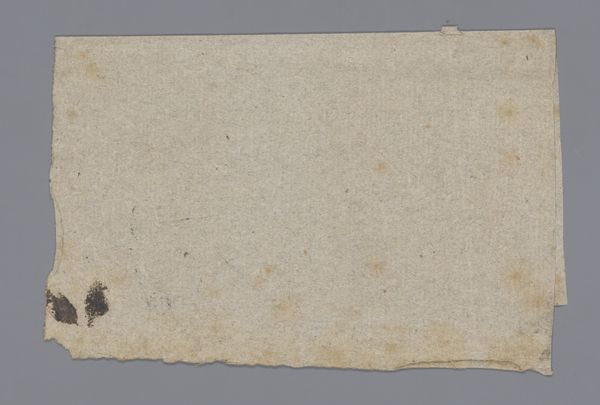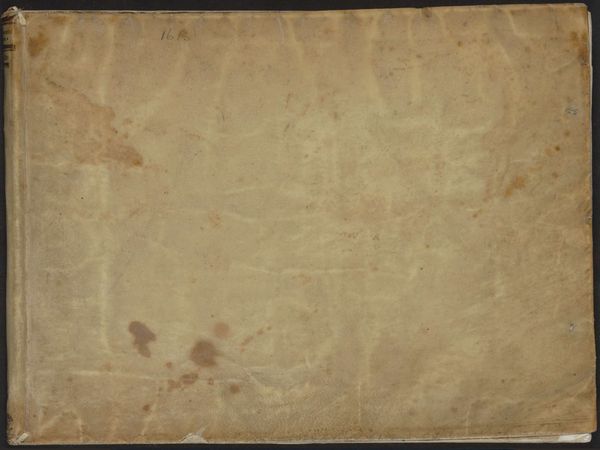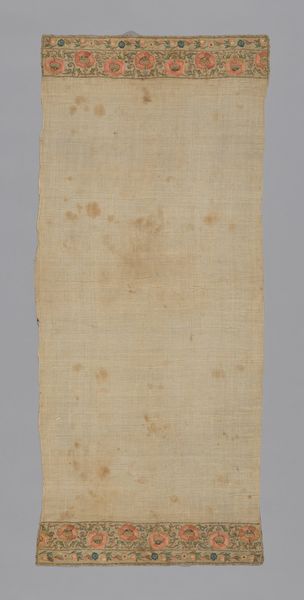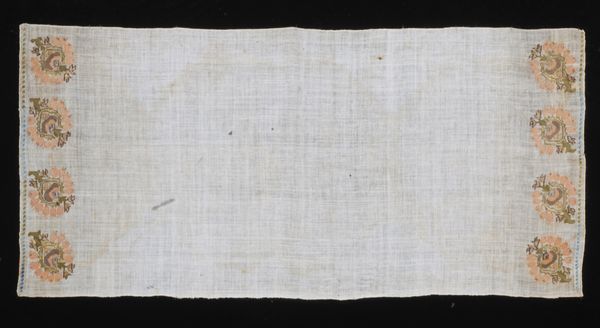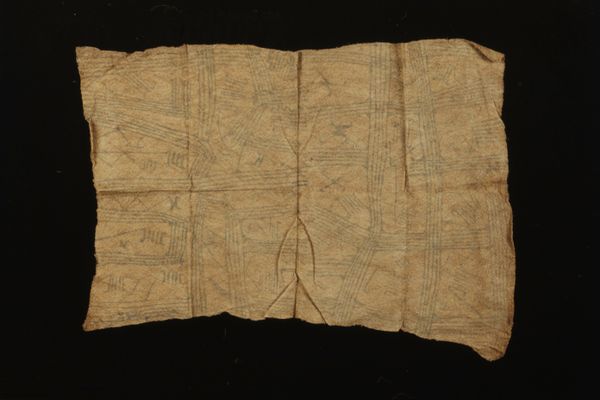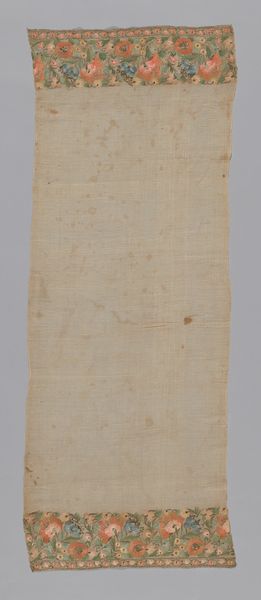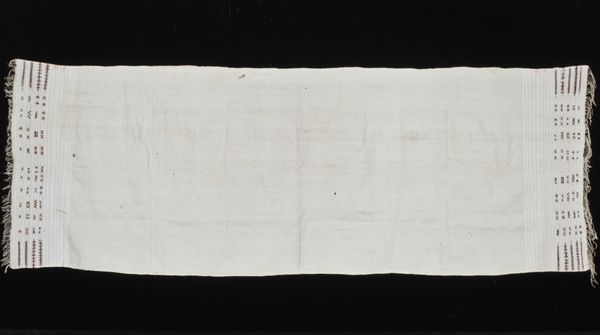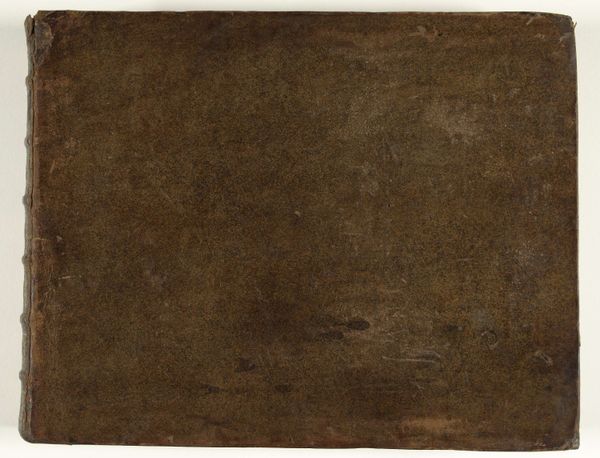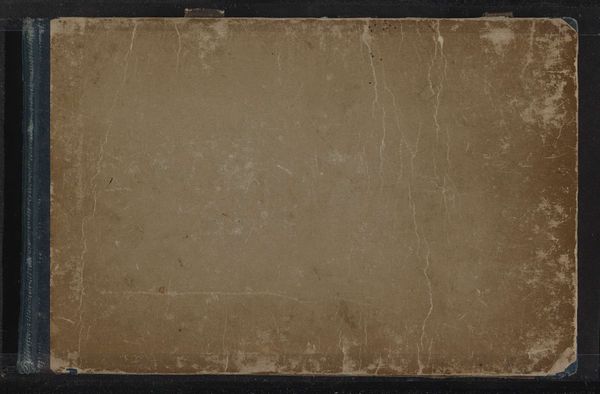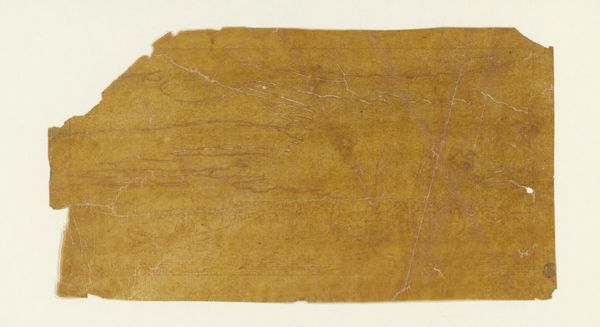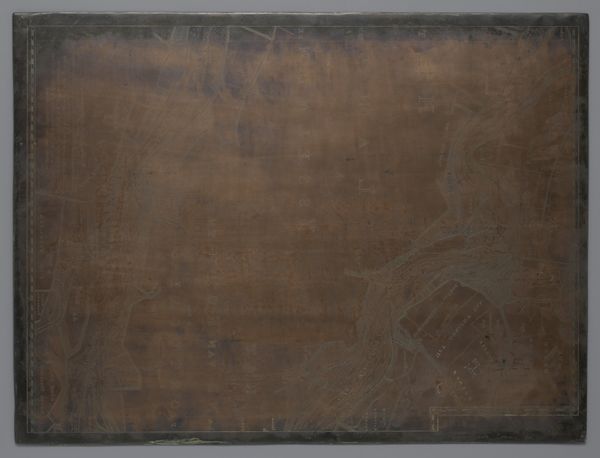
Album met landschappen met figuren naar Abraham Bloemaert 1600 - 1650
0:00
0:00
drawing, paper
#
drawing
#
textured paper
#
medieval
#
landscape
#
paper
#
11_renaissance
#
northern-renaissance
Dimensions: height 185 mm, width 250 mm, thickness 8 mm, width 500 mm
Copyright: Rijks Museum: Open Domain
Editor: We're looking at "Album met landschappen met figuren naar Abraham Bloemaert," a drawing on paper from somewhere between 1600 and 1650, here at the Rijksmuseum. The texture of the paper really stands out; it feels ancient, almost fragile. What do you see in its composition? Curator: I’m particularly struck by the way the artist has treated the surface. Look closely. Notice the tonal variations across the paper – a direct consequence of its age and handling. These marks, stains, and abrasions become integral to the aesthetic experience, shifting the focus from representation to the inherent qualities of the support itself. Editor: So, the imperfections become part of the artwork's language? Curator: Precisely. These aren’t flaws; they’re indexical signs. They evidence the artwork’s history, its physical journey through time. They draw attention to the artwork as a material object, a thing in itself, rather than solely a window onto a depicted scene. It moves beyond simple representation. Consider, does the damage somehow augment the artistic message or do you think it takes away from it? Editor: It's interesting. It definitely shifts my focus. Instead of looking for narrative, I am paying close attention to its pure materiality. Curator: Exactly! It brings into question the whole concept of originality versus copy. Is the skill with which it's made enough, or does the fact it is "naar" another artist detract from that in some way? Editor: It’s like the artwork is communicating on multiple levels – image and object together. I hadn’t considered that so acutely before. Curator: That interplay, the tensions between representation and materiality, between skill and pure making, are central to understanding the artistic complexity, aren't they? Editor: Absolutely. It gives me a totally new perspective on how to appreciate older drawings.
Comments
No comments
Be the first to comment and join the conversation on the ultimate creative platform.
